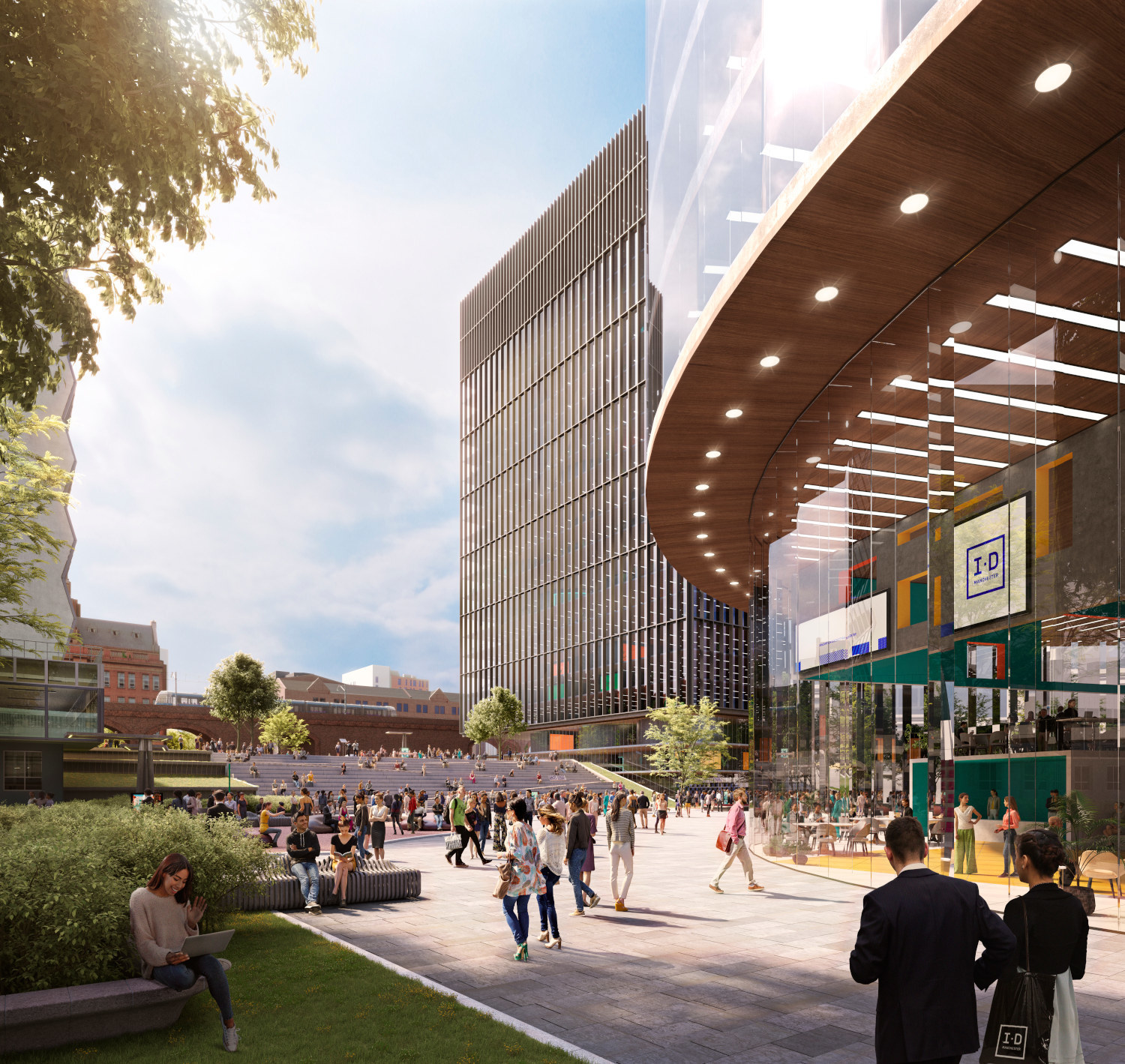ID Manchester sets out bold ambition to be the innovation capital of Europe
At the Manchester Pavilion at MIPIM this morning, The University of Manchester presented the unique opportunity to become its partner to deliver a new, world-class innovation district in the heart of Manchester, the £1.5 billion ID Manchester.
At the Manchester Pavilion at MIPIM this morning, The University of Manchester presented the unique opportunity to become its partner to deliver a new, world-class innovation district in the heart of Manchester, the £1.5 billion ID Manchester.
The presentation, attended by over 150 property professionals from all over the world, revealed The University of Manchester expects its joint partner to match its bold ambition to create a new neighbourhood which will nurture the next generation of game-changing businesses and bring huge economic benefits to Manchester.
Professor Dame Nancy Rothwell President and Vice-Chancellor of The University of Manchester, said: “I have seen how transformative other innovation districts in cities across the globe can be. I truly believe we can make ID Manchester the innovation capital of Europe, providing the perfect conditions for organisations of all sizes and from different sectors, to share knowledge and work together turning incredible ideas into reality.”
The University has strong track record in developing long-lasting, commercial relationships with leading global organisations such as Rolls Royce, the BBC, Siemens UK, Colgate Palmolive, Unilever and GlaxoSmithKline (GSK).
Since 2004 the University has contributed £746million to the economy through nurturing and developing businesses spinning-out of its research and development facilities, and it is on these foundations it seeks to build ID Manchester.
Diana Hampson, Director of Estates, The University of Manchester said: “The ID Manchester partnership has the makings of a formidable team. We will be looking for a world leading partner who has the experience and track-record to help us deliver this outstanding development.
Also speaking at the presentation this morning, Colin Thomasson Executive Director, CBRE, the property advisor to The University of Manchester said: “To create a successful innovation district you need a highly connected dynamic urban location. The city of Manchester has all the attributes required with its strong knowledge based economy, a young talented workforce and world leading university.”
“ID Manchester is the last major development opportunity in a city centre which is seeing exceptional growth, and perfectly positioned to reap the benefit from the city’s next wave of economic growth.
Joanne Roney, Chief Executive, Manchester City Council said: “The University and the city have long been closely aligned. We have grown up together and share a spirit of innovation, revolution and entrepreneurship. ID Manchester will build upon this proud shared history.”
It is expected an OJEU notice will be released in summer to signal the start of the competitive process to identify a partner, with a view to having an appointment made by mid-2020.

View from new public realm looking towards Vimto Park and the city centre
More about ID Manchester
The University of Manchester’s vision is that the 26 acre (10.5 hectare) ID Manchester will be a dynamic, world-class community with innovation, collaboration and enterprise at its heart, with the potential to create over 6000 new jobs.
ID Manchester benefits from an adopted Strategic Regeneration Framework (SRF). Current development parameters, which align with the University’s current vision, could comprise a circa 3.5 million sq ft of mixed use space including three acres of high quality public realm.
Any revision to the existing SRF should be brought forward in close collaboration with Manchester City Council.
The site benefits from existing green space and the unique feature of the 650,000 sq ft Grade II Listed Sackville Street Building, which offers a fantastic opportunity for re-purposing.
The University occupies the recently opened £60 million Masdar Building, home to the Graphene Engineering Innovation Centre, and the Manchester Institute of Biotechnology at the south end of the site and is looking for a partner to develop the remaining c.16.4 acres (6.64 hectares) of the site.
ID Manchester is adjacent to Manchester’s main public transport hub Piccadilly Railway Station and future HS2 station, and is a 20 minute train journey to the international airport.
ID Manchester is another piece in the jigsaw of the major regeneration taking place in that area of the city including Mayfield, London Road Fire Station, Kampus, Circle Square and the £1 billion investment already being made into its main Oxford Road campus by The University of Manchester.
ID Manchester is set in a truly international city region that has a GVA of £60 billion with up to 40% lower operational costs than London.
Today Manchester is the UK’s fastest growing city and is seeing major growth in demand for workspace, residential and hotels. Manchester City Council’s State of the City Report shows that over 527,000 people call the city centre their home and it is on target to hit over 600,000 residents within the next decade.